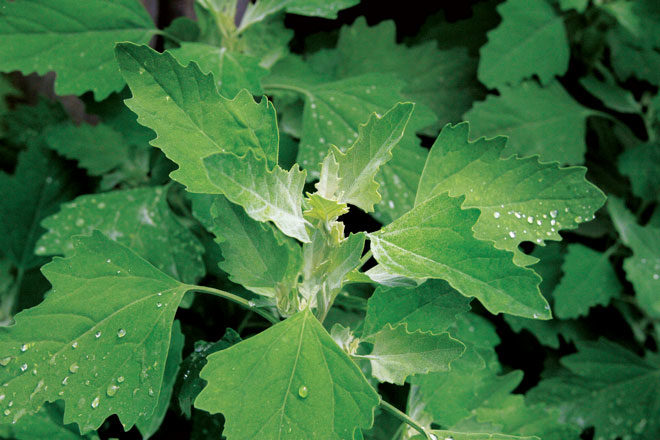No-Till Farmer
Get full access NOW to the most comprehensive, powerful and easy-to-use online resource for no-tillage practices. Just one good idea will pay for your subscription hundreds of times over.

| Editor’s note: This is the eighth in a series of articles about nine of the most troublesome weeds and tips for eradicating them from your no-till operation. |  |
Pictured Above: LOOK FOR ‘FROSTING.’ One physical characteristic of common lambsquarters is the waxy, granular, white substance that develops on the tops of the leaves.
Photo Courtesy of Shawn Asken, Virginia Tech
It's one of the oldest and most common broadleaf weed problems in the Corn Belt, and if left uncontrolled, lambsquarters can ding corn and soybean yields by at least 25%, says Bill Curran.
But as long as growers are proactive in their management and take action early, it’s usually one of the easier weeds to manage, the Penn State weed scientist adds.
There’s even better news for no-tillers who seed cover crops, as Curran says both practices can help deplete the weed seed bank and keep lambsquarters seedlings suppressed.
Emerging as a tiny seedling with pale green leaves, Curran says lambsquarters looks a lot like pigweed coming out of the ground until it develops its first true leaves. But one of the main differences is that lambsquarters emerges earlier than pigweed, usually around mid April for the central Corn Belt.
Additional characteristics include a purple coloring on the underside of the leaves, while a waxy, white, granular substance will form on the top of the leaves.
Like pigweed, lambsquarters can grow quickly — reaching 4-5 feet tall — and is a prolific seed producer, capable of producing up to…